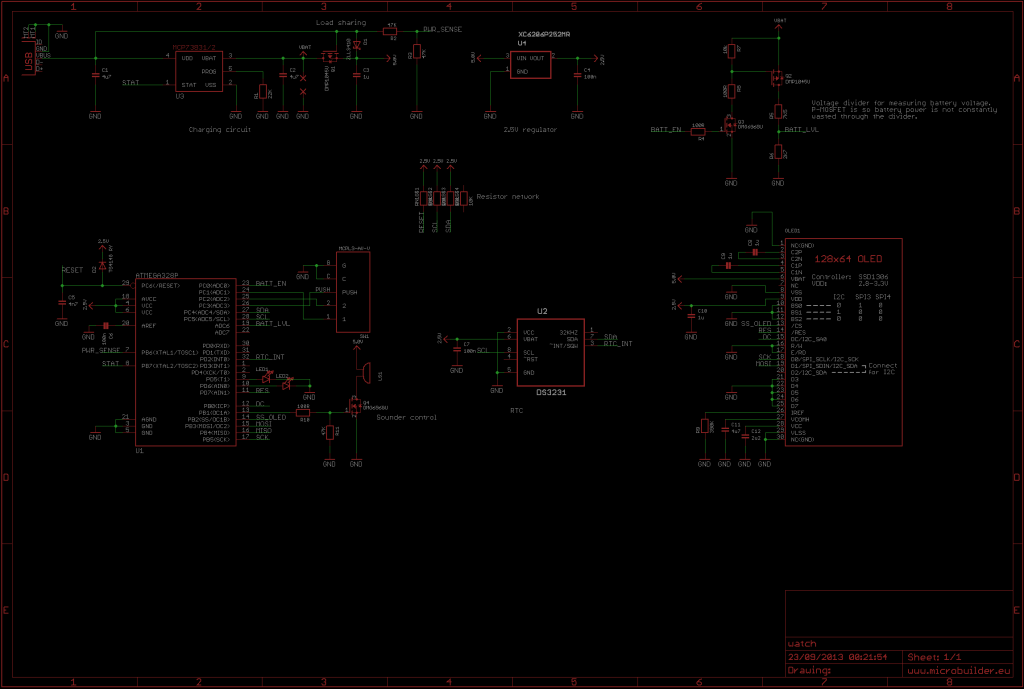Low-Power Microcontroller Applications in Smartwatches
Introduction
The main motivation behind this project was to see how much hardware and software I could cram into a small, watch-like device. I chose an OLED display because it’s only 1.5mm thick, doesn’t require a backlight, and each pixel emits its own light, making it look really cool. Initially, I planned to use a 0.96-inch display, but it turned out to be too small to fit all the components I wanted. Increasing the size to 1.3 inches proved to be the perfect solution.


Hardware

The hardware components of this watch include an Atmel ATmega328P microcontroller, a 2.5V voltage regulator, a Maxim DS3231M RTC, a 1.3-inch 128×64 monochrome OLED, 2 LEDs (red and green), a buzzer, a 3-route navigation switch, powered by a 150mAh LiPo battery, and charged via USB and 2 PCBs.
The microcontroller ATmega328P uses its internal 8MHz oscillator and runs at 2.5V. It consumes approximately 1.5mA in active mode and 100nA in sleep mode.
The DS3231M RTC is a high-precision clock chip with a small 8-pin package, including a built-in temperature-compensated MEMS resonator, with an accuracy of ±5ppm (±2 minutes 40 seconds per year). …
